
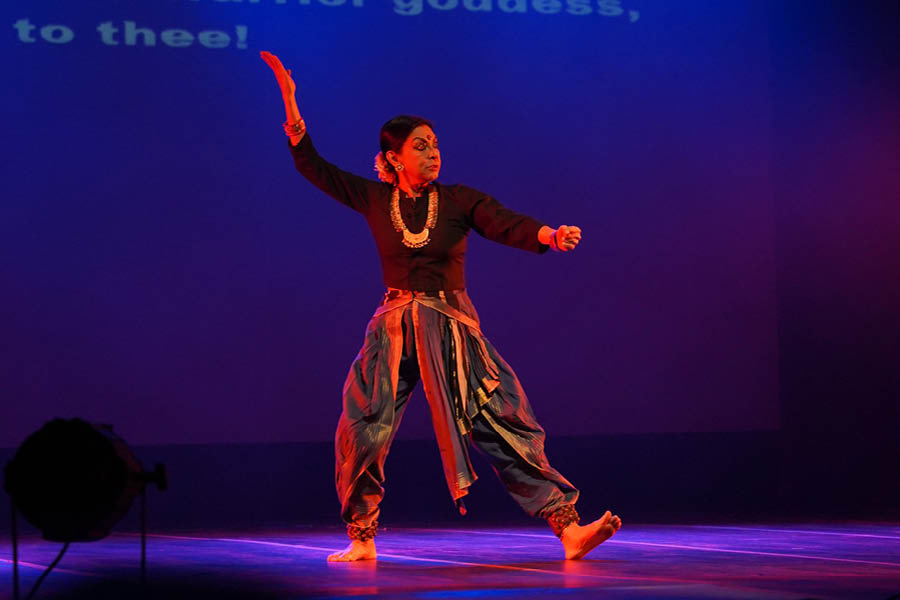
People who walked into GD Birla Sabhagar on March 16, walked out feeling empowered and hopefully with some unlearning and re-learning. Dancer, choreographer, publisher, activist and writer, Mallika Sarabhai, was in the city to present her show ‘Past Forward’, which was a series of contemporary Bharatanatyam performances. In the event organised by Pickle Factory Foundation as a part of their fourth season of Leap Session, the danseuse took us on a time travel through different centuries to show us the evolution of the dance style and the evolution of the female voice. Before each performance, Sarabhai explained the passage of how women were depicted and then proceeded to dance out the same
All photographs courtesy of Pickle Factory Dance Foundation
After an introductory dance, Mallika Sarabhai paused to tell her audience the story of the ‘changing nayika’. The dancer embodied the role of the ‘nayika’ yearning to unite with the paramatma, waiting for her Lord to come, a tradition predominantly depicted by male poets until the early 19th century when a shift occurred, potentially influenced by feminist sentiments, allowing the nayika to reject perpetual suffering
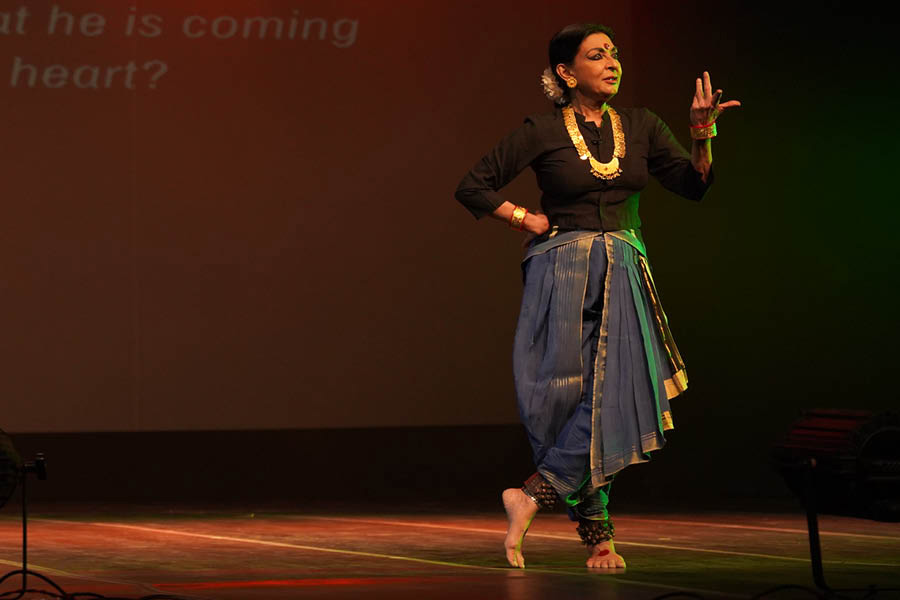
Sarabhai then emphasised on a certain change in voice. For 900 years, she (the nayika) endures waiting and suffering until realising the unfairness of her Lord becoming a sadhu. Armed with his love letters, she feels justified in confronting his father Shiva, marking a turning point where the ‘nayika’ embraces irony as a tool for expressing the unsaid, a concept that flourished in Sangram literature
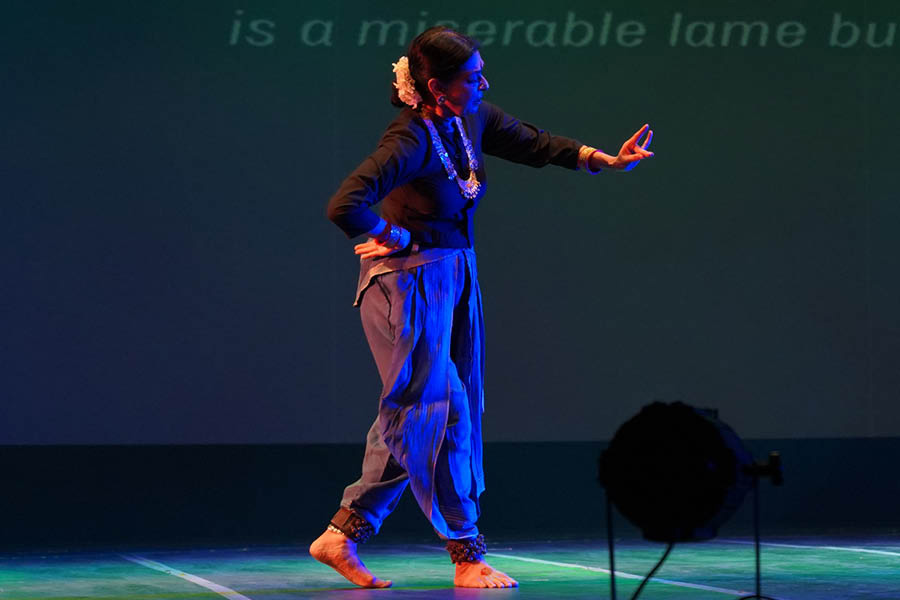
Historically, women’s feelings have been interpreted by men. Like the writers of yore who wrote about women waiting for their lords, male writers started romanticising and wrote about how women would dress beautifully and wait for them. But what would the women say since now they found a voice? What is the male and the women’s view of the woman?
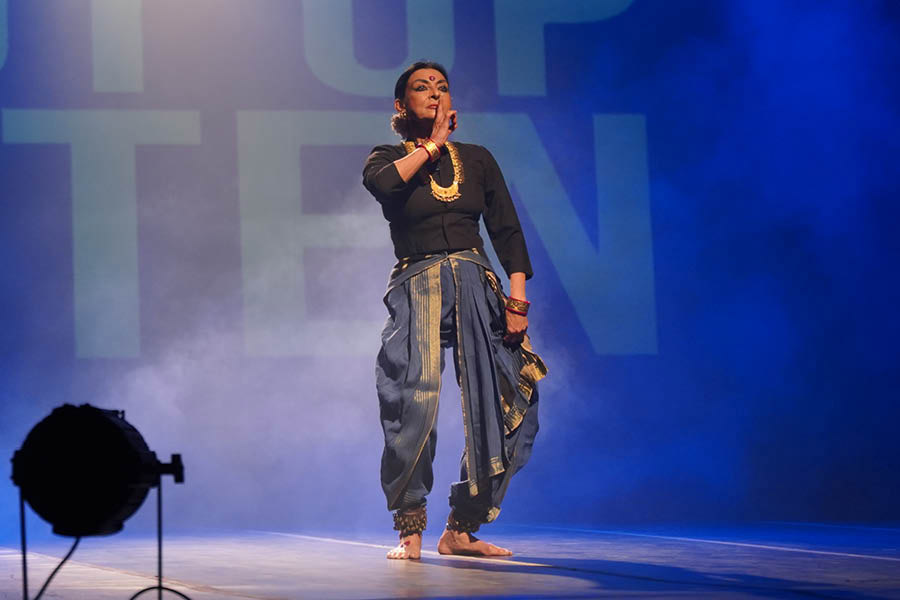
In India, despite a growing educational divide, traditional gender roles persist, with girls in every household being subjected to separate standards and restrictions, constantly told to adjust and conform as opposed to men. Sarabhai depicted this in her next dance
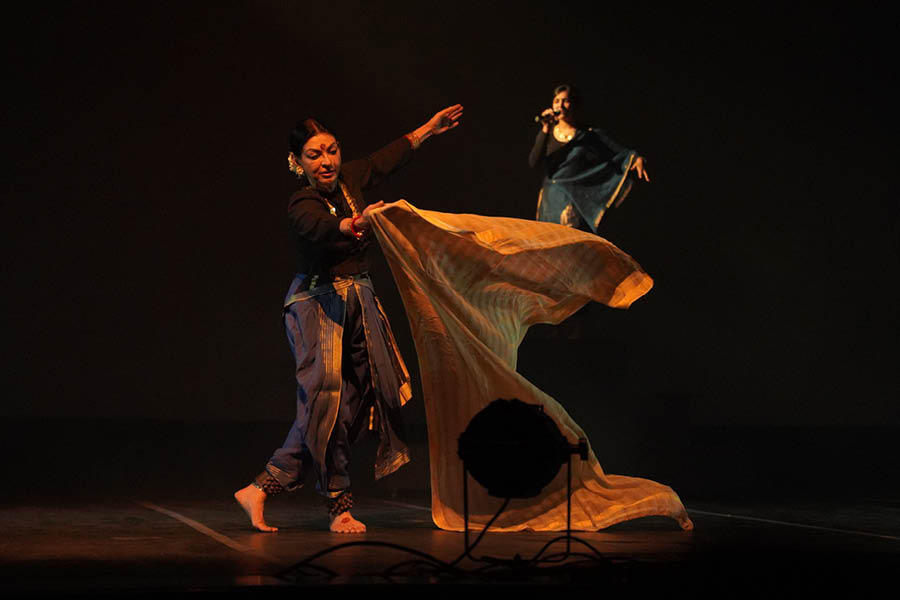
‘But even after all this, women are breaking so many ceilings. First CEO, first astronaut… laws are being made to empower women! But at the same time these laws need examining,’ said Sarabhai, as she wrapped up the show with her last performance in collaboration with singer Aditi Ramesh. ‘I watched Mallika after a long time and have seen her perform as several women from Meera to Sita. It’s a journey of every woman in India today,” said Aishika Chakraborty, professor and director of School of Women’s Studies, Jadavpur University. ‘Mallika Sarabhai does not mince words. Not when she is speaking, not when she is dancing. In Past Forward her commitment to voicing gender issues comes to the fore again, this time through locating it squarely in a Bharatanatyam idiom and context,” said Vikram Iyer of Pickle Factory Dance Foundation